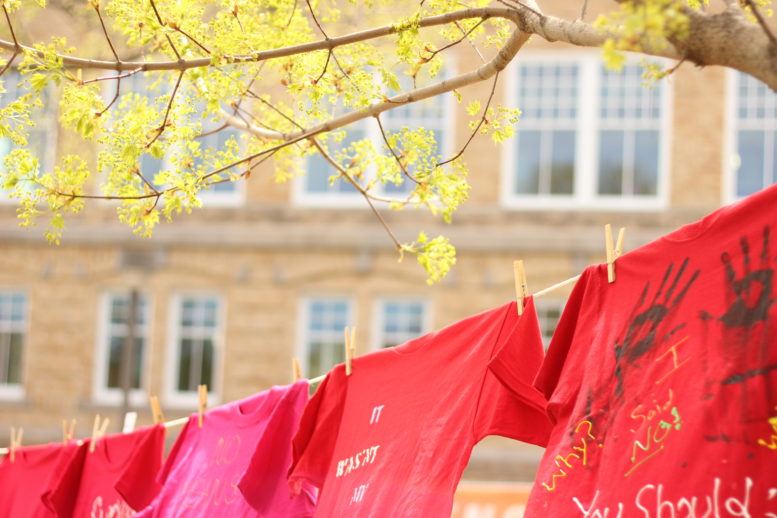By Susan Tebben
Ohio Capital Journal
When trying to get away from a violent abuser and keep food on the table, the next election is usually isn’t a priority.
For survivors of domestic violence, keeping their identities and locations a secret is vital for their own livelihood. Survivors don’t always think to grab a driver’s license or their latest utility bill when they’re leaving an abusive situation.
When identification is needed at a polling place and voter registration is public, those who have been abused are hesitant to exercise that particular right.
“This is one of those barriers to voting that most people don’t think about,” said Audrey Starr, of the YWCA Dayton, which runs the only domestic violence shelters in Montgomery and Preble counties.
Montgomery County ranks third in the state for domestic violence-related law enforcement calls, according to the YWCA. While calls to their 24/7 crisis hotline are down from last year, Starr said the likelihood that callers’ situations end in death or serious injury has tripled.
The most recent domestic violence report released by the Ohio Bureau of Criminal Identification and Investigation is from 2018. It showed a total of 65,845 “reported victims” of domestic violence, 20.6% (13,566 people) of those being live-in partners, and 13.23% (8,714) were wives.
On top of feeling unsafe going to the polls or providing identifying information, some survivors believe elections don’t bring them the change they need.
“I think many of the people we work with often do not feel that either party has their interests at heart,” said Kelly Cooke, executive director of the Southeast Ohio domestic violence agency My Sister’s Place. “They have experienced a great deal of disappointment with our elected officials, who they see as ignoring their needs.”
Ohio’s domestic violence programs are funded through competitive federal grants and a small portion of county marriage and divorce license fees, according to the Ohio Domestic Violence Network.
In the last Ohio General Assembly, domestic violence received its first ever line-item in the state budget, for a total of $1 million a year for all state programming. Surrounding states have devoted more money to the cause, with West Virginia allocating $2.5 million from the general fund and Indiana providing $5 million. Kentucky gives $6.7 million and Pennsylvania funds the programs with $15.63 million from government funds, according to ODVN data.
“Our programs have relied on federal grant funding for so long that the Ohio legislature has gotten away with not funding our programs,” said Micaela Deming, policy director and staff attorney for the Ohio Domestic Violence Network.
Safe At Home program
One thing the state has joined other states in doing is creating the Safe At Home program, a confidentiality program run through the Secretary of State’s office.
Through the program, survivors of domestic violence, stalking, human trafficking, rape or sexual battery can get a substitute Post Office box address designated through the Secretary of State’s office to shield an actual residence from public records.
Private entities aren’t required to accept the substitute address, but state governmental entities should, according to the Secretary of State’s office.
The state program was created through an Ohio House bill, and a more recent bill wants to expand the legislation. Currently, the Safe at Home program doesn’t address confidentiality needed when a survivor owns or is purchasing a home, or the use of the substitute address in child support or custody proceedings.
House Bill 429 seeks to address those issues. It was passed in the House in June, and is awaiting consideration by the Senate Local Government, Public Safety and Veterans Affairs Committee.
Voting safely
Even with the potential risks, advocates and shelter coordinators say this year has been a little different. More clients and shelter residents have been asking how they can vote.
The YWCA in Dayton has worked to educate survivors on their rights and the empowerment that can come from voting in a safe way. The Dayton facility works to make transportation available for those that need or want it to get to the polls.
“We know that when people commit to voting and look at ‘what does that look like for me’ … walking through those steps and writing down the plan makes them much more likely that they’ll go through with it,” Starr said.
Agencies that break down voting into plans and simple steps just as they do getting employment, education or permanent housing, are able to make the task less overwhelming, Starr said.
***
Also from Ohio Capital Journal:
Mysterious ‘pop-up PACs’ targeting races throughout country in final days of campaign
WASHINGTON — A super PAC financed tens of thousands of dollars worth of digital ads in late October soliciting allegations that North Carolina Senate hopeful Cal Cunningham engaged in extramarital affairs.
But because of a loophole in campaign finance laws that were written in the era of typewriters, voters won’t know who paid for the ads until after the election. That’s because the money came from a so-called pop-up PAC, a political action committee created so late in an election cycle, it won’t have to disclose who funds it until after Nov. 3.
In the final 20 days before an election, candidates for office are required to disclose to the Federal Election Commission within 48 hours if they take in a donation of more than $1,000. Pop-up PACs, however, don’t have to, and there are several dozen of them that have sprung up around the country in 2020.
So any money they take in after Oct. 15 of this year doesn’t have to be revealed until the next legal disclosure deadline, which isn’t until mid-November. READ MORE





